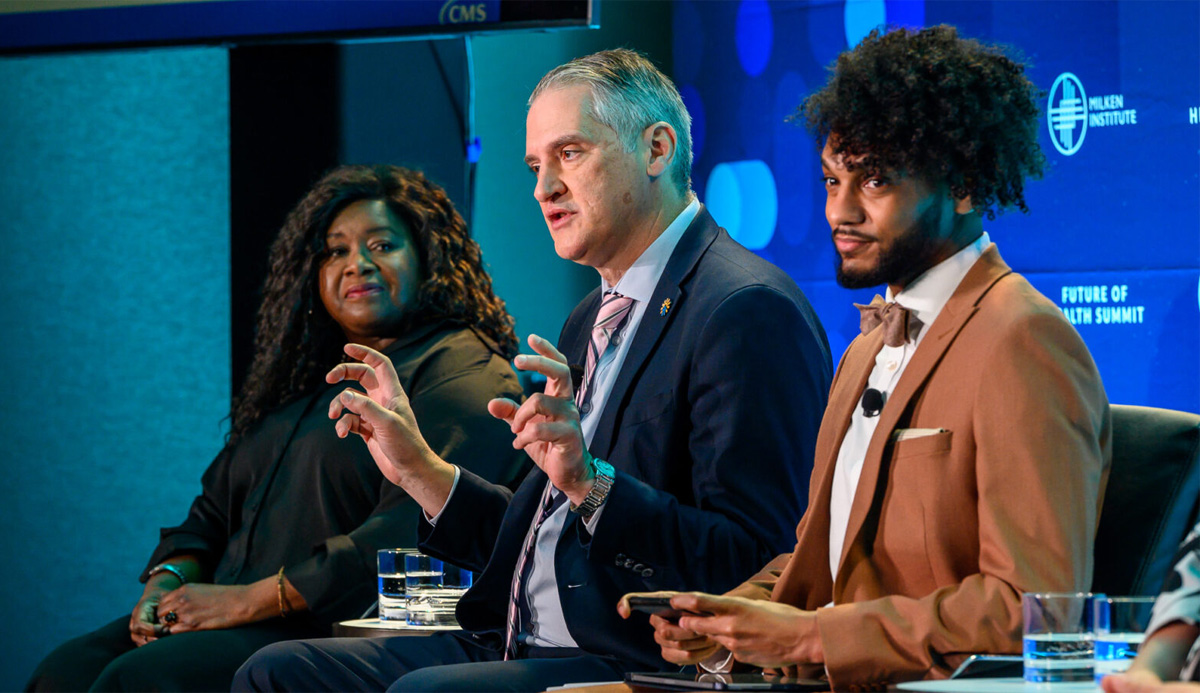Ballerina, firefighter, hygienist? Why dentistry needs to start its pipeline with young kids
Dentistry has a diversity problem, and medical and dental experts say the best way to fix it is to start the pipeline early in Black and brown communities.
“We can’t wait until someone graduates from undergrad to try to recruit an African American or Hispanic dentist,” Gillian Barclay, vice president of global public health at Colgate-Palmolive, said at the Milken Institute Future of Health Summit on Wednesday.
Barclay pointed to the fact that African Americans account for only a small percentage of STEM undergraduates at U.S. universities. She said the dentistry field is chasing this tiny group when they could be wooing a much larger pool of people starting in middle school. The same goes for expanding pipeline programs for diverse dental hygienists and technicians.
Wells Hutchison, CEO of Delta Dental Plans Association, thinks the field could go even further by reaching out to kids at primary-school age to introduce dentistry as a potential career.
Even starting early, there’s a lot of work to be done in engaging with marginalized communities. At the root of the diversity crisis in dentistry are factors such as underserved communities’ lack of access to dental care and early adverse experiences with the dental system.
The paucity of Black and brown dentists in the U.S. impacts underrepresented people who are more receptive to health providers that look like them and have the cultural context to understand them, Barclay explained. When a dentist from a similar background tells a child “don’t go to sleep with a meal in your mouth”— a concept that might better resonate with them more than a mandate to brush their teeth twice a day — it can make a meaningful difference for the child’s oral health.
Unsurprisingly, children from poorer and non-white families are far more likely to suffer from dental illness than children from wealthier and white families, said Arturo Brito, CEO of the Children’s Health Fund. His organization strives to close this gap with mobile dental clinics where kids can have positive dental experiences via a cool blue van, an occasional mascot appearance, and the bedside manner of someone trained to understand people like them.
Natalia Chalmers, a pediatric dentist, still remembers a grandmother who made a two-bus trip to the dental clinic with three grandchildren in tow. When asked the usual first question of a visit — “How often do you brush your teeth?” — the child’s response was matter-of-fact: “Well, when we visit Grandma we have one toothbrush, and all of us share it.”
Chalmers, who is the chief dental officer for the Centers for Medicare and Medicaid Services, said the incident stayed with her as a reminder that providers can’t assume that everyone has access to “even the simplest, most effective preventive measures.”
Bridging the divide between medical doctors and dentists is also vital for oral health equity efforts, the panelists agreed. Integrating the fields so that medical practitioners can discuss patients’ oral health needs, and vice versa, could do wonders for people’s health overall. This is particularly the case when more and more research points to a link between oral and chronic disease.
Read the original article here: https://www.statnews.com/2022/12/09/dentistry-diversity-problem/
